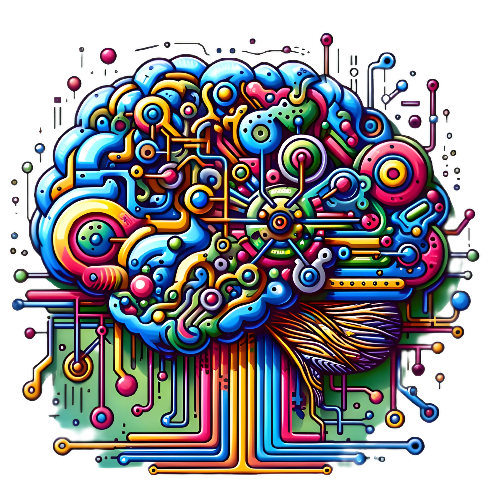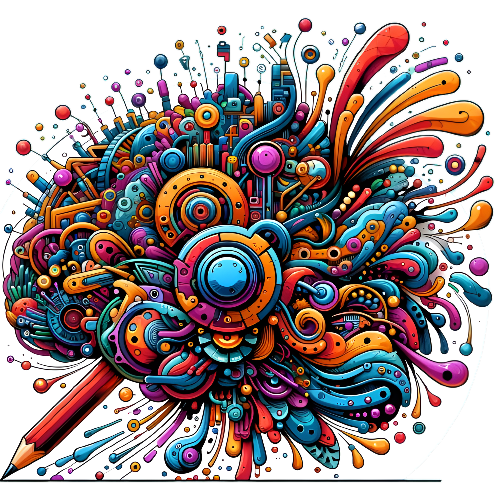|
--- |
|
model_type: gpt2 |
|
architectures: |
|
- GPT2LMHeadModel |
|
config: |
|
adaptation_rate: 0.05 |
|
complexity_metric: null |
|
desired_improvement_rate: 0.02 |
|
ecosystem_dynamics: |
|
environmental_volatility: 0.1 |
|
resource_pool: 1 |
|
embedding_dim: 768 |
|
growth_improvement_threshold: 0.01 |
|
hidden_dim: 2048 |
|
initial_neuron_count: 5000 |
|
innovative_growth_net: |
|
adaptation_rate: 0.05 |
|
complexity_metric: null |
|
initial_capacity: 250000 |
|
input_size: 2048 |
|
input_dimension: 768 |
|
low_stability_threshold: 0.01 |
|
max_complexity: 10000 |
|
max_neurons: 250000 |
|
max_sequence_length: 200 |
|
min_epochs_before_growth: 5 |
|
model_filename: pytorch_model.bin |
|
num_embeddings: 25000 |
|
pruning_improvement_threshold: 0.005 |
|
some_adaptation_rate: 0.05 |
|
stability_threshold: 0.02 |
|
start_token_index: 2 |
|
transformers_version: 4.34.0 |
|
attn_pdrop: 0.1 |
|
bos_token_id: 50256 |
|
embd_pdrop: 0.1 |
|
eos_token_id: 50256 |
|
initializer_range: 0.02 |
|
layer_norm_epsilon: 0.00001 |
|
n_ctx: 2048 |
|
n_embd: 2048 |
|
n_head: 16 |
|
n_layer: 24 |
|
n_positions: 2048 |
|
n_special: 0 |
|
predict_special_tokens: true |
|
resid_pdrop: 0.1 |
|
summary_activation: null |
|
summary_first_dropout: 0.1 |
|
summary_proj_to_labels: true |
|
summary_type: cls_index |
|
summary_use_proj: true |
|
task_specific_params: |
|
conversational: |
|
max_length: 1024 |
|
min_length: 20 |
|
length_penalty: 1.5 |
|
num_beams: 5 |
|
early_stopping: true |
|
no_repeat_ngram_size: 3 |
|
temperature: 0.7 |
|
top_k: 50 |
|
top_p: 0.9 |
|
license: apache-2.0 |
|
datasets: |
|
- vicgalle/alpaca-gpt4 |
|
language: |
|
- en |
|
metrics: |
|
- perplexity |
|
- accuracy |
|
pipeline_tag: text-generation |
|
--- |
|
--- |
|
## Phillnet 🚀 |
|
|
|
 |
|
|
|
🚀 Welcome to **Phillnet5b** 🌟 |
|
|
|
Dive into the depths of AI with Phillnet, your 5 Billion-parameter titan! This colossal model is not just numbers; it's a labyrinth of knowledge, ready to unlock new realms of possibilities. 🧠💡 |
|
|
|
From text generation to complex problem-solving, Phillnet5b is your gateway to unparalleled AI power. Get ready to embark on a journey where every parameter is a pathway to innovation. 🌍✨ |
|
|
|
Let's revolutionize the world with **Phillnet5b** - where every bit counts and every neuron fires towards the future! 🚀🔮 |
|
|
|
--- |
|
|
|
## Usage and License |
|
|
|
 |
|
|
|
If you intend to use this AI model, I kindly request that you provide appropriate credit to the original author (Phillip Holland) as a gesture of acknowledgment for his effort in developing and sharing this model. |
|
|
|
**Please adhere to the following guidelines:** |
|
|
|
1. **Give Credit:** When you use this AI model, include a visible and prominent credit to the original author (Phillip Holland) in your project, research paper, or application. You can use the following format: |
|
|
|
|
|
2. **Review the License:** Carefully read and comply with the terms of the accompanying license (LISCENSE.md). The license outlines the permissions and restrictions for using this AI model. Make sure you understand and adhere to its provisions. |
|
|
|
By using this AI model, you acknowledge that you have read and agreed to the terms and conditions set forth in the license. |
|
|
|
Thank you for your understanding and cooperation. Together, we can foster responsible and ethical AI development and usage. |
|
|
|
--- |
|
## Model Overview |
|
|
|
 |
|
|
|
Phillnet, a marvel in the realm of language models, is a cutting-edge Dynamic Neural Network designed for advanced natural language processing tasks. Breaking away from conventional models, Phillnet exhibits dynamic adaptation and continuous evolution, showcasing its prowess in continual improvement. Crafted with a custom architecture, Phillnet seamlessly integrates an Innovative Growth Network, ushering in adaptability and innovation. |
|
|
|
## Key Features |
|
|
|
- **Model Type:** Dynamic Neural Network 🧠 |
|
- **Embedding Dimension:** 768 |
|
- **Hidden Dimension:** 2048 |
|
- **Initial Neuron Count:** 5000 |
|
- **Input Dimension:** 768 |
|
- **Max Neurons:** 250000 |
|
- **Max Sequence Length:** 200 |
|
- **Num Embeddings:** 25000 |
|
- **Model Filename:** pytorch_model.bin |
|
- **Transformers Version:** 4.34.0 |
|
|
|
## Ecosystem Dynamics 🌐 |
|
|
|
Phillnet thrives in a dynamic ecosystem: |
|
|
|
- **Environmental Volatility:** 0.1 |
|
- **Resource Pool:** 1.0 |
|
|
|
## Innovative Growth Network 🌱 |
|
|
|
Empowered by an Innovative Growth Network for dynamic adaptation: |
|
|
|
- **Adaptation Rate:** 0.05 |
|
- **Initial Capacity:** 250000 |
|
- **Input Size:** 2048 |
|
|
|
--- |
|
|
|
## Hyperparameters Overview |
|
|
|
 |
|
|
|
Here's a concise overview of the key hyperparameters used for training the model: |
|
|
|
**Training Parameters** |
|
- `max_neurons`: 250,000 |
|
- `epochs`: 50 |
|
- `clip`: 5 |
|
- `patience`: 7 |
|
- `adaptation_rate`: 0.05 |
|
- `sequence_length`: 200 |
|
- `max_sequence_length`: 200 |
|
- `weight_decay`: 0.005 |
|
- `num_embeddings`: 25,000 |
|
- `embedding_dim`: 768 |
|
- `hidden_dim`: 2048 |
|
- `learning_rate`: 1e-5 |
|
- `some_intermediate_size`: 3072 |
|
|
|
**Additional Parameters** |
|
- `input_dimension`: 768 |
|
- `initial_neuron_count`: 5000 |
|
- `some_adaptation_rate`: 0.05 |
|
- `complexity_metric`: None |
|
|
|
**New Parameters** |
|
- `growth_improvement_threshold`: 0.01 |
|
- `pruning_improvement_threshold`: 0.005 |
|
- `stability_threshold`: 0.02 |
|
- `max_complexity`: 10,000 |
|
- `low_stability_threshold`: 0.01 |
|
- `min_epochs_before_growth`: 5 |
|
- `desired_improvement_rate`: 0.02 |
|
|
|
--- |
|
|
|
## Seamless Integration with Hugging Face 🤗 |
|
|
|
 |
|
|
|
from transformers import AutoTokenizer, AutoModelForCausalLM |
|
|
|
tokenizer = AutoTokenizer.from_pretrained("ayjays132/phillnet") |
|
tokenizer.add_special_tokens({'pad_token': '[PAD]'}) |
|
|
|
model = AutoModelForCausalLM.from_pretrained("ayjays132/phillnet") |
|
|
|
# Example conversation |
|
conversation_history = [ |
|
"Hello, how are you?", |
|
"I'm doing well, thank you! How about you?", |
|
"I'm good too. What's new with you?", |
|
"Not much, just working on some projects. How can I help you today?" |
|
] |
|
|
|
# Concatenate the conversation strings |
|
conversation_text = " ".join(conversation_history) |
|
|
|
# Tokenize and pad the input |
|
input_ids = tokenizer.encode(conversation_text, return_tensors="pt", padding=True, truncation=True) |
|
|
|
# Generate a response |
|
output_ids = model.generate(input_ids, max_length=150, num_return_sequences=1, pad_token_id=tokenizer.eos_token_id) |
|
|
|
# Decode the generated response |
|
generated_response = tokenizer.decode(output_ids[0], skip_special_tokens=True) |
|
|
|
# Print the generated response |
|
print("Generated Response:", generated_response) |
|
|
|
## Experience the Magic ✨ |
|
|
|
- **Adaptive Learning:** Phillnet dynamically adapts to data patterns, continually enhancing its performance. |
|
- **Innovative Growth:** The model evolves through an Innovative Growth Network, ensuring continuous enhancement. |
|
- **Custom Architecture:** Crafted with a dynamic custom architecture for unparalleled language understanding. |
|
|
|
🌐 **Welcome to the CustomModelLoader.py Odyssey!** 🌟 |
|
|
|
Embark on a scholarly quest to unlock the potential of your AI model, "ayjays132/phillnet", with our elegantly crafted script. Designed for the curious minds in AI, this guide is your beacon through the realm of machine learning. Let's dive into the script that's set to revolutionize your AI journey! 🚀 |
|
|
|
### The Script Unveiled: CustomModelLoader.py |
|
This script is your trusty companion in the AI landscape, designed to effortlessly awaken your pre-trained model from its slumber in the Hugging Face Hub. Here's a peek into its core: |
|
|
|
``` |
|
# CustomModelLoader.py |
|
|
|
import torch |
|
from transformers import AutoTokenizer, AutoModelForCausalLM |
|
import logging |
|
|
|
# Set up logging |
|
logging.basicConfig(level=logging.INFO) |
|
logger = logging.getLogger(__name__) |
|
|
|
def load_custom_model(model_name, device): |
|
try: |
|
# Load the model directly from Hugging Face Hub |
|
model = AutoModelForCausalLM.from_pretrained(model_name).to(device) |
|
logger.info(f"Model loaded successfully from {model_name}") |
|
return model |
|
except Exception as e: |
|
logger.error(f"An error occurred while loading the model: {e}") |
|
raise |
|
|
|
def load_tokenizer(tokenizer_name): |
|
try: |
|
# Load the tokenizer |
|
tokenizer = AutoTokenizer.from_pretrained(tokenizer_name) |
|
logger.info(f"Tokenizer loaded successfully from {tokenizer_name}") |
|
return tokenizer |
|
except Exception as e: |
|
logger.error(f"An error occurred while loading the tokenizer: {e}") |
|
raise |
|
|
|
def inspect_model_layers(model): |
|
logger.info("Inspecting model layers and weights...") |
|
for name, param in model.named_parameters(): |
|
logger.debug(f"Layer: {name} | Size: {param.size()} | Values : {param[:2]}...\n") |
|
|
|
if __name__ == "__main__": |
|
# Define device |
|
device = torch.device("cuda" if torch.cuda.is_available() else "cpu") |
|
logger.info(f"Using {'CUDA' if device.type == 'cuda' else 'CPU'}") |
|
|
|
# Model name or path in Hugging Face Hub |
|
model_name = "ayjays132/phillnet" |
|
tokenizer_name = model_name # Assuming tokenizer is at the same path |
|
|
|
try: |
|
# Load the tokenizer and model |
|
tokenizer = load_tokenizer(tokenizer_name) |
|
model = load_custom_model(model_name, device) |
|
|
|
# Inspect the model layers and weights |
|
inspect_model_layers(model) |
|
|
|
# Perform a simple test to verify model weights are loaded correctly (Optional) |
|
input_ids = tokenizer.encode("Hello, world!", return_tensors="pt").to(device) |
|
with torch.no_grad(): |
|
outputs = model(input_ids) |
|
logger.info("Model test run completed successfully.") |
|
|
|
print("Custom model and tokenizer loaded successfully.") |
|
|
|
except Exception as e: |
|
logger.error(f"An error occurred: {e}") |
|
``` |
|
|
|
### With `CustomModelLoader.py` at your side, you're not just loading a model; you're unlocking a world of possibilities. Whether you're fine-tuning for accuracy or predicting the unknown, your AI journey is about to get a whole lot smoother. So, scholars and AI enthusiasts, let the odyssey begin! 🎩✨ |
|
|
|
### 🛠 How It Works: The Mechanics |
|
|
|
1. **Setting the Stage**: Our script begins by checking whether to summon the powers of CUDA or settle in the CPU realm. |
|
2. **Summoning the Model & Tokenizer**: It then gracefully calls upon the `AutoModelForCausalLM` and `AutoTokenizer` from the Hugging Face Hub, ensuring your model and tokenizer are at the ready. |
|
3. **Error Handling Like a Pro**: Should any mischiefs arise, our script is well-armed with try-except blocks to catch and log any spells gone awry, keeping you informed every step of the way. |
|
|
|
### 🎓 For the AI Scholars: |
|
|
|
This script isn't just a tool; it's a companion designed to make your AI endeavors more productive and enjoyable. Here's how you can harness its power: |
|
|
|
- **Plug & Play**: Simply place this script in your project, and it's ready to go. No complicated setup required! |
|
- **Error Logs**: Detailed logging ensures you're always in the know, making troubleshooting a breeze. |
|
- **Flexibility**: Designed with customization in mind, feel free to tweak the script to fit the unique needs of your scholarly pursuits. |
|
|
|
--- |